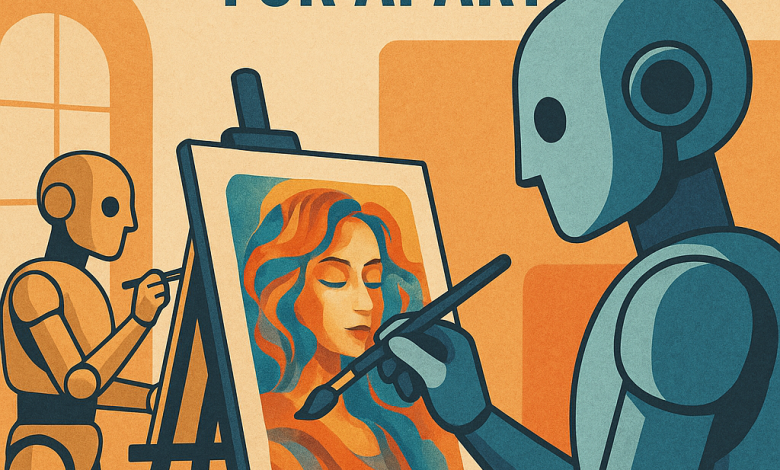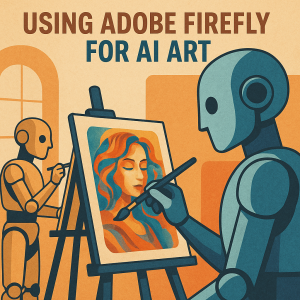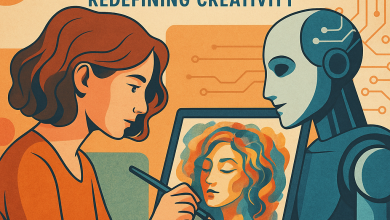Adobe Firefly – How AI is Transforming Creative Workflows
Discover how Adobe Firefly revolutionizes digital creativity with AI-generated images, text effects, and design automation. Learn how professionals use Firefly to accelerate workflows.

Adobe Firefly – How AI is Transforming Creative Workflows
Artificial Intelligence (AI) is no longer a futuristic idea. It’s already embedded in our creative tools, reshaping the way designers, photographers, and marketers bring ideas to life. Among the most powerful innovations in this field is Adobe Firefly, Adobe’s suite of generative AI tools that seamlessly integrates with Creative Cloud.
Firefly represents a major shift — empowering creators to automate repetitive tasks, generate new content on demand, and explore visual possibilities that once took hours, even days, to achieve.

What Is Adobe Firefly?
Adobe Firefly is a generative AI system developed by Adobe to help users create images, text effects, and designs through natural language prompts. Unlike many other AI models, Firefly is trained on licensed and rights-safe content, ensuring that every generated result is commercially usable.
Firefly isn’t just another AI art generator; it’s designed specifically for professionals — people who already use Photoshop, Illustrator, or Adobe Express — and want AI to enhance their existing workflows rather than replace them.
Firefly offers several key tools:
-
Text-to-Image: Generate realistic or stylized images using written prompts.
-
Generative Fill: Remove or add objects seamlessly inside Photoshop.
-
Text Effects: Turn text into vivid, stylized artwork using AI textures.
-
Generative Recolor: Instantly recolor vector artwork in Illustrator.
-
3D-to-Image: Convert 3D shapes into stunning renders.
Why Adobe Firefly Is a Game-Changer for Creators
Before Firefly, creating a high-quality composite image required several steps — from selecting the right stock photo to manually masking, color-grading, and adjusting light balance. Now, much of that process can be accelerated with a single prompt.
For example, imagine a designer tasked with producing a campaign visual showing “a futuristic cityscape at sunset.” With Firefly, typing that exact phrase can generate dozens of variations within seconds. The designer can then fine-tune, replace backgrounds, and use Firefly’s Generative Fill inside Photoshop to perfect the result.
Speed and efficiency are not the only benefits. Firefly also opens creative opportunities for people without advanced design skills — lowering the entry barrier while maintaining professional quality.
Key Features That Define Firefly
1. Generative Fill
Arguably Firefly’s most talked-about feature, Generative Fill allows users to remove, extend, or replace elements in an image with context-aware AI suggestions. It doesn’t just fill space randomly; it analyzes lighting, color, and texture to ensure realism.
2. Text-to-Image Engine
This core feature lets you describe what you want — such as “a surreal desert landscape with glowing pyramids” — and Firefly generates it instantly. You can then adjust styles, lighting, and aspect ratios.
3. Style Reference and Presets
Firefly provides style references (photographic, vector, fantasy, realistic, sketch, etc.), making it easy to maintain a consistent visual direction across projects.
4. Seamless Integration with Adobe Tools
Firefly is natively integrated into Photoshop, Illustrator, and Express. You don’t have to switch between apps — AI tools appear within your regular workflow panels.
How to Use Adobe Firefly Effectively
To get the most out of Firefly, you need to master prompt engineering — the art of crafting effective AI instructions.
Here’s a simple framework:
Structure of a strong prompt:
[Subject] + [Action/Scene] + [Style] + [Lighting] + [Mood/Color]
Example:
“A vintage motorcycle parked under neon lights in Tokyo at night, cinematic lighting, high contrast.”
This structure helps the AI understand both context and aesthetics, giving you predictable, high-quality results.
Pro Tip: Combine prompts with Firefly’s content type filters (photo, artwork, vector, 3D) to refine your outcomes faster.
Ethical and Legal Considerations
One major concern in the AI art space is copyright and data usage. Adobe addresses this by training Firefly on Adobe Stock, public domain, and licensed datasets, ensuring that the generated content can be used commercially without risk.
Additionally, every image created with Firefly includes Content Credentials, metadata showing it was AI-generated. This promotes transparency and trust in creative industries.
Firefly vs Other AI Image Generators
| Feature | Adobe Firefly | Midjourney | DALL·E 3 |
|———-|—————-|————-|
| Licensing | Rights-safe, commercial use | Unverified | Mixed |
| Integration | Deep with Adobe suite | None | None |
| Usability | Easy for designers | Discord-based | Web-only |
| Style Control | High | Artistic bias | Limited |
| Output Consistency | Very stable | Variable | Stable |
Firefly’s biggest advantage is workflow integration — no other AI generator is as deeply connected to professional design tools.
The Future of AI in Creative Work
Adobe Firefly marks only the beginning. In coming years, we can expect real-time generative layers, AI-driven typography systems, and auto-layout features in UI/UX tools like Adobe XD and Figma.
But even with automation, human creativity remains irreplaceable. AI can assist, accelerate, and inspire — but the human touch defines emotion, storytelling, and originality.
Conclusion
Adobe Firefly is redefining creativity. For professionals, it saves time; for beginners, it lowers barriers. And for the industry as a whole, it represents a more ethical and sustainable path to AI-powered design.
Whether you’re a graphic designer, marketer, or content creator, now is the best time to explore Firefly. The faster you learn to use it, the more competitive you’ll be in the evolving creative economy.

